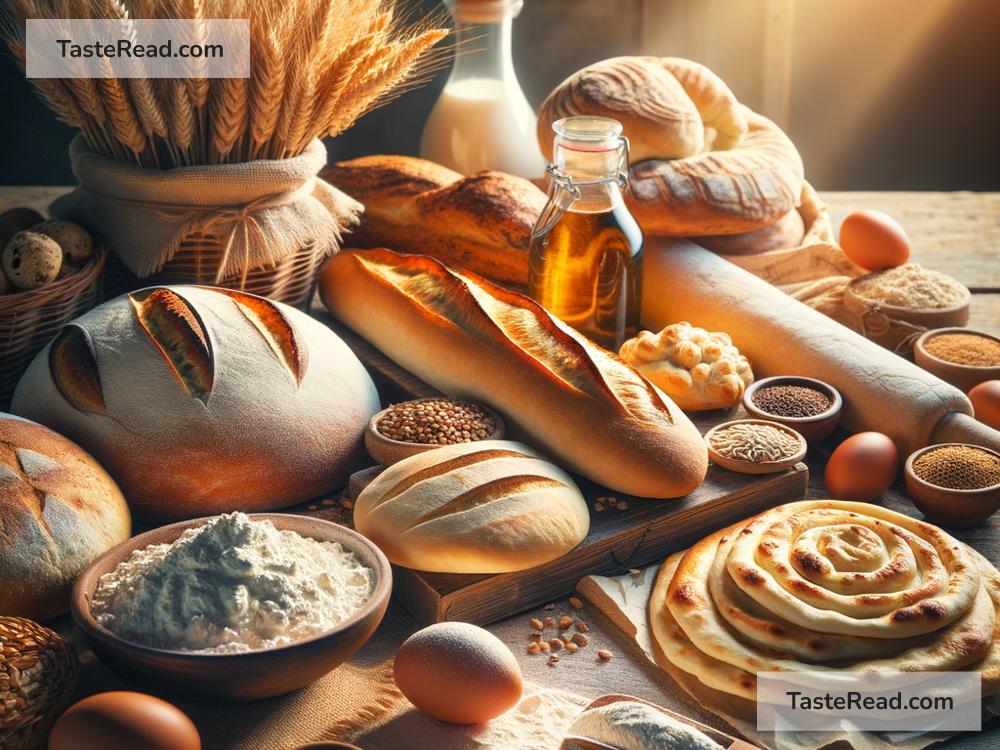How Bread Became the Staff of Life
Bread is a food that has been loved and eaten by people for thousands of years. It’s simple, tasty, and nutritious, making it an important part of diets around the world. But have you ever wondered how bread became known as the “staff of life”? This phrase highlights how essential bread has been throughout human history. Let’s take a journey to understand how bread became so important.
The Origins of Bread
The story begins more than 10,000 years ago, when humans first started farming. Before farming, people were hunters and gatherers who lived off wild plants and animals. But then, in places like the Middle East, humans discovered they could grow grains like wheat and barley.
At first, these grains were eaten raw or boiled into porridge. Eventually, people figured out how to grind the grains into flour and mix it with water to make dough. Early bread was flat and simple—similar to modern flatbreads or pita. This was the first step toward bread becoming a staple food.
Bread and Civilization
As people learned to farm more efficiently, they had extra food. This surplus allowed communities to grow and thrive. Farming and bread were closely connected to the development of civilizations. Ancient cultures like the Egyptians, Babylonians, and Greeks all relied on bread as a key source of nutrition.
Around 6,000 years ago, the Egyptians discovered fermentation. They noticed that when dough was left out, it puffed up due to natural yeasts in the air. This led to the invention of leavened bread, which is softer and spongier than flatbread. Ancient Egyptians loved bread so much that they even used it as money and offered it to their gods.
In Greece, bread evolved further with the addition of ingredients like honey, olive oil, and herbs to make it more flavorful. By the time the Roman Empire was thriving, bread had become central to everyday life. Romans perfected bread-making with advanced ovens and techniques, and they introduced bread to the lands they conquered. This helped spread its popularity across Europe.
Why Is Bread So Important?
Bread became the “staff of life” because it was cheap, filling, and versatile. Grains, the main ingredient in bread, can be stored for long periods, which made them a reliable food source during tough times. Bread also pairs well with other foods—whether it’s meat, cheese, or vegetables—making it a complete meal for rich and poor alike.
Throughout history, bread has been a symbol of survival. In medieval Europe, for example, peasants depended on dark, coarse bread made from rye or barley, while the wealthy enjoyed fine white bread made from wheat. Regardless of social status, bread was central to diets because it provided energy and nourishment.
Bread and Culture
Bread isn’t just food—it’s also deeply tied to culture and tradition. In many religions, bread holds a sacred meaning. In Christianity, for example, bread represents the body of Christ in Communion ceremonies. Jewish communities celebrate the Sabbath with challah, a special braided bread, while Muslims break their fast during Ramadan with bread and other foods.
Different regions and cultures also have their own unique breads. In India, people enjoy flatbreads like naan and roti. In France, the baguette is a symbol of French culinary art. In Mexico, tortillas are a staple of many meals. These diverse breads show how versatile and universal this food has become.
Modern Bread
Over time, bread-making has evolved. In the 19th century, inventions like mechanical mixers and commercial yeast made it easier to produce bread on a large scale. Later, in the 20th century, factories began mass-producing sliced bread, which became a household favorite due to its convenience.
Today, bread is still one of the most popular foods worldwide. You can find hundreds of varieties, from sourdough and multigrain to gluten-free options for those with dietary restrictions. Artisan bakers continue to experiment with flavors and techniques, keeping the tradition alive while adapting to modern trends.
Challenges for Bread
Despite its popularity, bread faces challenges in modern times. Some people are moving away from bread because of concerns about gluten or carbohydrates. Others are choosing different foods as diets change. Still, bread remains a comforting and widely enjoyed food for billions of people.
The Future of Bread
As we look ahead, bread will likely remain important. It’s a food that has connected people across cultures and centuries. Whether it’s a piece of toast in the morning or a slice of pizza for dinner, bread is a reminder of how far humanity has come—from grinding raw grains to baking delicious loaves.
Conclusion
Bread truly is the “staff of life.” It has fed soldiers, farmers, kings, and families throughout human history. Its simplicity, adaptability, and cultural significance make it more than just a food—it’s a symbol of survival, community, and tradition.
The next time you take a bite of bread, think about the incredible journey it has taken to reach your plate. From ancient flatbreads to modern loaves, bread continues to bring us nourishment, joy, and a connection to history. It’s no wonder bread has been—and always will be—a staple of life.


